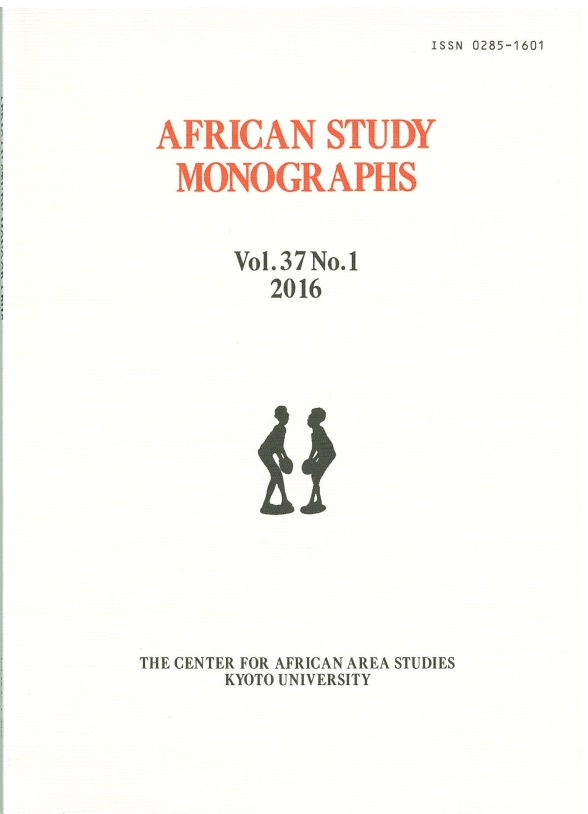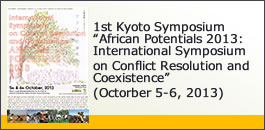Date: November 26, 2011
Venue: Gakuyu Kaikan, Meeting Room, Kyoto University
Program

10:15-11:15 Toshihiro Abe (Otani University)
South Africa’s Truth and Reconciliation Commission (TRC) and Its Aftermath
11:15-12:15 Yoichi Mine (Doshisha University)
The Mystery of Justice and Spheres of Intimacy—A Record of the South African TRC by a ‘Conscientious Afrikaner’
12:40-13:20 Meyu Yamamoto (Kyoto University)
Reconciliation and Amnesty in the TRC
13:20-14:30
Discussion
Report Overview
Toshihiro Abe (Otani University)
South Africa’s Truth and Reconciliation Commission (TRC) and Its Aftermath
Toshihiro Abe presented an assessment and analysis of the South African TRC’s activities and characteristics. The Commission’s activities had a legal foundation in the 1995 TRC Law. However, they lacked any legal definitions of “truth” and “reconciliation.” To assure the legitimacy of its activities, the commission was careful to conduct investigations in public hearings and keep records. Grants of amnesty were one of the Commission’s frequently highlighted activities. However, these grants were not rooted in such a spirit as “post-apartheid mutual forgiveness.” Two prerequisites existed for a grant of amnesty: the offense in question was “political violence” and the testimony brought forth was “full and complete testimony.” Furthermore, the actual amnesty hearings were notably different from normal judicial proceedings, and the interaction between the commission members and those gathered at the hearings sometimes led to instances in which offenders changed their previous attitude of denying and started apologizing. These cases were publicized to a wide audience by the mass media, such as TV.
Abe noted that a 2011 survey of public opinion highlighted negative responses to the question of whether the TRC served to improve race and ethnic-group relations. Criticism was also leveled inside and outside South Africa, claiming, for example, that the “TRC did not sufficiently call out the apartheid government officials,” “TRC should have the authority to investigate corruption during apartheid,” and “fundamental direction and principles of the TRC are biased.” While emphasizing the variety of viewpoints on how to assess and situate the TRC, Abe argued that rather than functioning to resolve and “eliminate enmity between racial groups,” the TRC was likely a medium for “transitioning from armed conflict to (non-violent) negotiation, transaction, and competition” in South African society. (Reporter: Toru Sagawa)
Yoichi Mine (Doshisha University)
The Mystery of Justice and Spheres of Intimacy—A Record of the South African TRC by a ‘Conscientious Afrikaner’
Having penned a commentary in the Japanese translation of the book Country of My Skull (Gendai Kikakushitsu, 2010), Mine’s discussed the TRC-inspired book and its author. The strong international focus on the TRC was caused by the following characteristic features of the TRC among other things: Its scale and detailed testimonial records, its introduction of a full-fledged amnesty system, the manner of examining the historical relationship between Africa and the West in regard to assigning blame for racism. Moreover, the TRC with such characteristics was set in South African history of suffering much wanton death. The book was written by a South African journalist who issued reports directly from the TRC proceedings. The book does not simply present the relations between victims and perpetrators during apartheid as blacks against whites but maintains the complexity of the relationships as they really were, as in the cases of whites who were killed while participating in the liberation movement, and blacks who became police spies.
The author, Antjie Krog, is an Afrikaner—a descendant of the first white (mostly Dutch) immigrants who settled in what is now South Africa in the mid-17th century. During the apartheid era, whites were able to live normal lives in South Africa, with the majority basically oblivious to the large-scale, institutional discrimination and human rights violations that were taking place against blacks. As a journalist in charge of reporting the outrageous violence that came to light through the TRC, Krog had to constantly face the fact of her complicity as one of the oppressors and reflect on it as she carried out her work. Krog also writes critically about how the TRC became politicized by the National Party, the ANC, and others. At the same time, having covered the entire process of the TRC, Krog brings her book to a close by looking forward to the possibility of the creation of a community of new South Africans who uphold the honor of their affiliated group while also acknowledging their sins and responsibilities, or in other words, a “fusion of dignity and redemption of a higher dimension.” (Reporter: Toru Sagawa)
Meyu Yamamoto (Kyoto University)
Reconciliation and Amnesty in the TRC
In the context of a review of the amnesty approval process of the Truth and Reconciliation Commission (TRC), Yamamoto clarified the difficult circumstances surrounding the authorizing of “justice” and people’s opposition to revisiting the past violence. The Amnesty Committee served to approve amnesty for actions, inactions, and violations under apartheid and in connection with political ends during 1960–1994. The approval for amnesty was conditional upon an individual’s confession of past transgressions. The total number of amnesty petitions submitted was 7,115, and 1,167 of them were approved. The majority of the petitions came from individuals already imprisoned, and the number submitted by apartheid government officials and military leaders was small. Former administration officials criticized the amnesty grants owing to the uniform reprieve given to ANC members. On the other hand, the criticism offered by ANC intellectuals concerned whether or not violence committed as an act of resistance should be pardoned. Yamamoto also explained the various views on the pros and cons of distinguishing between anti- and pro-apartheid strife, how Mandela’s speeches lent efficacy to the TRC, and how the ANC intelligence agency filed for amnesty, thus quieting the internal voices of criticism. Moreover, Yamamoto spoke about whether it is possible ethically to distinguish violence under apartheid and whether violence in the form of resistance is a crime. She then summarized the issues surrounding the TRC, noting the difficulty of authorizing “justice” in modern conflicts. (Reporter: Shuichi Oyama)
Discussion
During the discussion time, first, two perspectives emerged on the issue related to the systems and the workings that concluded the TRC. One view was that the TRC activities were certainly a significant opportunity to transform the manner in which South African history and society were approached; however, it was inappropriate to see those activities as an end point to conflict resolution and reconciliation. The TRC recognized “multiple truths” in addition to “legal truth,” allowing testimony and official records of various opinions and interpretations regarding apartheid that would have been impermissible under normal law. However, many voices existed that were not heard during the TRC proceedings and attempts were made afterward to hear such voices outside the proceedings.
Another perspective was that the issue of the effectiveness of conflict resolution in South Africa should not be reduced to an explanation of the institutional problems of the TRC. The reason for this is that conflict resolution is determined by the manner in which the conflict started and developed, whether it ended, and what entities assumed political power afterward. The possibility for transitional justice is entirely dependent upon the path that the society in question took up to that point. Thus, when considering the “leveraging” of African Potentials, it is possible that the degree to which any leveraging can occur in conflict resolution rests on reflection, in each individual case, on the state of the conflict that arose and the systems that followed in the particular country or region.
Concerning African Potentials, it was mentioned that Abe’s point, that “The TRC was more likely a medium for ‘transitioning from armed conflict to (non-violent) negotiation, transaction, and competition’ in South African society,” might also very well apply in this case. “Negotiation, transaction, and competition,” for example, are similar to the ritual processes observed across Africa. That is, the “unification of communities by implementing ritual” presumed by functionalistic analysis actually very rarely proceeds in a unidirectional fashion, and the ritual often fails. However, this failure does not mean that the people see the ritual as fundamentally flawed. Rather, by continually repeating the ritual and re-negotiating each time, a “provisional truth” is worked out that allows the participants to address the state of affairs. It was argued that such negotiation leaves open an avenue for handling situations and can sow seeds of hope.
Meanwhile, even if the TRC was more likely a medium for “transitioning from armed conflict to (non-violent) negotiation, transaction, and competition,” the following questions were raised: Was the TRC indeed became a forum for facing the concerns of those who lost their lives while participating in the anti-apartheid conflict? Did the TRC rebuild South Africa in a manner that would lead to restoring a type of balance that could bring security to the lives of surviving relatives? Which parties were able to participate in the TRC as equal players, and which were not? What level of power had to be wielded to secure a place as an equal player in the first place? In addition, it was noted that two and a half years was an unreasonably short span of time for the TRC to judge historical prejudice that had been ongoing since the middle of the 17th century. It would not be surprising, then, if the commission continued till this day.
Finally, overlapping with the discussion from the 2nd research meeting on the post-election violence in Kenya’s last election, when considering options for Africa’s conflict resolution overall, participants exchanged opinions in which they envisioned a division of labor of sorts that would enlist “legal judgment” via domestic courts, the ICC, etc. for treating large-scale human rights violations such as apartheid, while leveraging African Potentials for conflicts that arise in a more local context. (Reporter: Toru Sagawa)




 Exploring African Potentials, Mila Special Issue
Exploring African Potentials, Mila Special Issue
